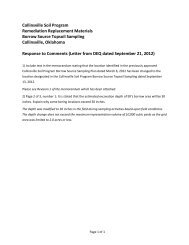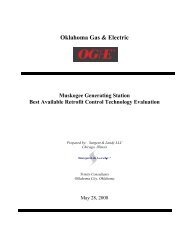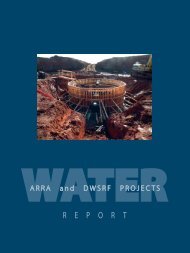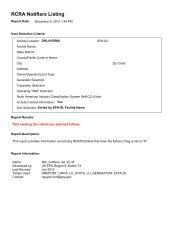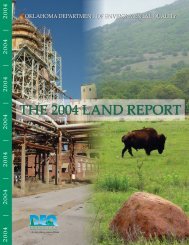Technical documentation and software quality assurance for project ...
Technical documentation and software quality assurance for project ...
Technical documentation and software quality assurance for project ...
Create successful ePaper yourself
Turn your PDF publications into a flip-book with our unique Google optimized e-Paper software.
Participants noted that “Obstacle congestion” could be<br />
interpreted differently in different places <strong>and</strong><br />
circumstances. Also, the same location—the area around<br />
the convention center—was evaluated differently by<br />
different participants, who chose either medium or high.<br />
(“What that means to someone in a city may be different<br />
from someone in a small town. NYC would be 100%<br />
congestion all the time. Coming from a city, I’m sure it’s<br />
medium or high.” “If we have a chemical that’s heavier<br />
than air, an obstacle can be a foot high.” “I guess it’s<br />
what’s around the area: Are there a lot of trees <strong>and</strong><br />
buildings to impede movement of cloud?” “I’d infer that<br />
means the number of objects in the vicinity of the<br />
explosion.” “This is pretty qualitative. What is 10-40%?<br />
Here, I’d go medium because there’s no tall buildings.<br />
From a maritime perspective, I’d probably choose low.”<br />
“…the deck of a ship is pretty low. At most it’s probably<br />
medium, but low is probably going to give me the worst<br />
case so I’ll choose it.” “That one, I would really need the<br />
help screen. Would it be single-storied buildings or<br />
normal ground? How does it apply to a ship? To a<br />
container ship, stacked high, vs. a tanker? I’d want to go<br />
worse-case scenario, to CYA. Maybe have the worst case<br />
choice be the default.”)<br />
The term “high power explosive device” is not clear to<br />
participants. (“…high power explosive device—TNT?<br />
What are we talking about here? This explosion is going<br />
to ignite another explosion?” “What’s a high power<br />
explosive device: a grenade or an atom bomb?”)<br />
Participants appear to think in percentages rather than<br />
fractions. (“0.6 LEL. I assume that’s 60% of the LEL.”)<br />
Participant would like to see both LEL <strong>and</strong> UEL as LOCs<br />
under the downwind dispersion option. (“I teach that you<br />
shelter in place <strong>for</strong> toxic hazards, evacuate <strong>for</strong> flammable<br />
hazards…Knowing LEL is important, knowing if you’re<br />
above UEL is also important, because you have to go<br />
through the flammable range to go back to where you’re<br />
safe.”)<br />
Most participants select Computational when completing<br />
a scenario, though it’s generally not a needed step <strong>for</strong> their<br />
work, <strong>and</strong> leaves them confused.<br />
47<br />
Address in help <strong>and</strong> in justin-time<br />
<strong>documentation</strong> (e.g.,<br />
list some real-life examples<br />
in parentheses following<br />
each choice). Consider<br />
adding subcategories (e.g.,<br />
urban/rural).<br />
DEFINE THIS TERM IN<br />
HELP, OR REWORD IN<br />
INTERFACE. CONSIDER<br />
JUST-IN-TIME<br />
DOCUMENTATION.<br />
Reword as “60% LEL”<br />
Consider including LEL as<br />
LOC along with fractions<br />
commonly used by<br />
responders, especially 10%<br />
LEL. Consider including<br />
UEL as an LOC choice <strong>for</strong><br />
the downwind dispersion<br />
option.<br />
Consider moving this option<br />
to an Options submenu.



